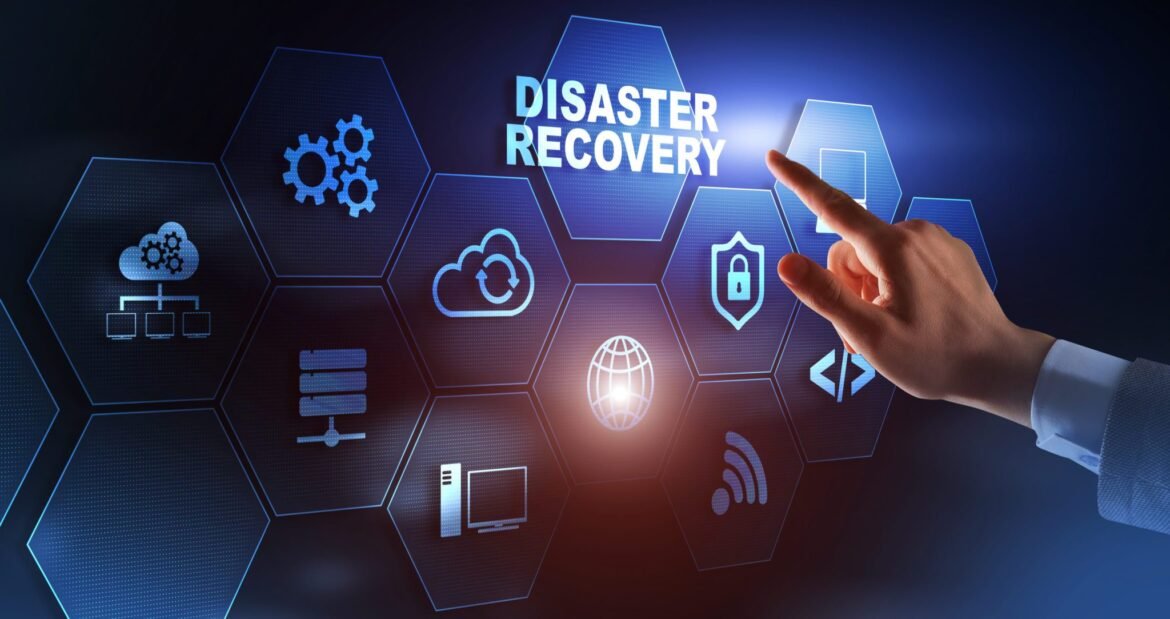Introduction to Disaster Recovery Support
Disaster recovery support is a fundamental necessity for businesses in today’s digital world. With an increasing reliance on technology, companies face various risks such as cyberattacks, system failures, and natural disasters that can severely disrupt operations. A well-structured disaster recovery plan ensures that businesses can quickly recover from such incidents, minimizing financial losses, maintaining customer trust, and preserving data integrity. Without a proper strategy, organizations may suffer prolonged downtime, loss of critical data, and reputational damage, which can be difficult to recover from.
Disaster recovery support includes a combination of proactive planning, advanced technology, and expert assistance. Traditional recovery methods often involve lengthy and manual processes, making them less efficient and prone to errors. However, modern solutions leverage cloud computing, automation, and artificial intelligence to streamline the recovery process, reducing downtime significantly. By implementing real-time monitoring, predictive analytics, and automated failover systems, businesses can stay ahead of potential disruptions and ensure seamless operations, even in times of crisis.
Comprehensive Risk Assessment and Preparedness
A thorough risk assessment is the foundation of an effective disaster recovery plan. Businesses must evaluate all potential threats, including cyber risks, power failures, hardware malfunctions, and even human errors that can lead to data breaches or system failures. Identifying vulnerabilities within IT infrastructure helps organizations develop a proactive approach to mitigating these risks. Without such assessment, businesses may overlook crucial weaknesses that could escalate into significant disruptions.
Once vulnerabilities are identified, businesses must implement robust risk mitigation strategies. This includes updating outdated hardware, enhancing cybersecurity measures, and ensuring that critical applications and systems are backed up regularly. Preventive measures such as multi-factor authentication, data encryption, and network segmentation help strengthen security and reduce exposure to threats. Regular audits and penetration testing also allow organizations to assess the effectiveness of their security frameworks and refine them as needed.
Data Protection and Automated Backup Solutions
One of the most vital components of disaster recovery support is data protection. Businesses must ensure that their critical data is backed up regularly and stored in multiple secure locations. Automated backup solutions offer seamless and real-time data synchronization, allowing businesses to recover lost or corrupted data without significant delays. Cloud-based storage solutions provide an additional layer of security, offering scalability, remote access, and encrypted storage options to safeguard sensitive information.
Implementing incremental backup strategies helps optimize storage while maintaining data integrity. Instead of backing up entire datasets repeatedly, incremental backups save only new or modified data, reducing storage requirements and accelerating recovery times. Additionally, businesses must establish strict access controls to ensure that only authorized personnel can retrieve or restore data, preventing unauthorized access or potential data breaches.
System Recovery and High-Availability Configurations
System recovery solutions play a crucial role in ensuring minimal disruption during unexpected failures. Failover systems enable businesses to shift operations to backup environments instantly, allowing them to continue functioning without significant delays. High-availability configurations use redundant systems to keep business applications running smoothly, even in the event of infrastructure failures.
Automated load balancing ensures that system resources are allocated efficiently, preventing bottlenecks and enhancing overall performance. Geographically dispersed data centers further strengthen disaster recovery capabilities by preventing localized incidents from affecting the entire system. Businesses must conduct regular disaster recovery drills to test their failover systems and identify any areas for improvement. By continuously refining their recovery strategies, organizations can enhance resilience and improve response times during emergencies.
Business Continuity and Compliance
A well-structured disaster recovery plan directly contributes to business continuity, ensuring that organizations can maintain operations even during disruptive events. Companies that experience prolonged downtime face financial losses, damaged reputations, and potential regulatory penalties. By investing in a reliable recovery strategy, businesses can mitigate these risks and protect their long-term success.
Compliance with industry regulations is another essential aspect of disaster recovery support. Regulatory bodies such as GDPR, HIPAA, and PCI-DSS mandate strict data protection measures to safeguard sensitive customer and business information. Organizations must adhere to these regulations by implementing encryption, access controls, and audit logs to track data handling practices. Failure to comply with these requirements can lead to legal consequences and reputational damage, making regulatory compliance an integral part of disaster recovery planning.
Cost Efficiency and Long-Term Sustainability
Implementing an effective disaster recovery plan is not only about safeguarding data but also about optimizing costs and resources. Automated recovery processes reduce the need for manual intervention, lowering operational expenses and improving efficiency. Businesses can save money by minimizing downtime, preventing data loss, and reducing the reliance on extensive IT personnel during recovery efforts.
Cloud-based disaster recovery solutions offer cost-effective alternatives to traditional infrastructure-heavy recovery methods. By leveraging scalable cloud services, businesses can eliminate the need for expensive on-premise hardware while ensuring faster data restoration. Additionally, investing in preventive measures such as cybersecurity enhancements and proactive monitoring reduces the likelihood of major incidents, ultimately saving businesses from costly disruptions.
Industries That Benefit from Disaster Recovery Support
Various industries rely heavily on disaster recovery solutions to maintain seamless operations. Financial institutions, for example, must ensure the security of transactions and customer data to maintain regulatory compliance and consumer confidence. A service disruption in the financial sector could lead to significant financial losses and reputational damage, making disaster recovery an essential investment.
Healthcare organizations also require robust disaster recovery plans to safeguard patient records and medical data. Any data loss in the healthcare industry could result in compromised patient care and legal consequences. Ensuring secure and accessible records helps medical professionals deliver timely and accurate treatments while adhering to data privacy regulations.
E-commerce businesses and digital service providers depend on uninterrupted services to maintain customer trust and satisfaction. Cyber threats targeting online platforms are increasing, making disaster recovery support crucial for securing financial transactions, customer data, and website functionality. A well-planned recovery strategy ensures that businesses remain operational and protected against cyberattacks.
Challenges in Disaster Recovery Planning
Setting up a comprehensive disaster recovery strategy comes with challenges that businesses must address. Implementation complexity is one of the primary concerns, as organizations need to integrate modern recovery solutions with existing IT infrastructure. Ensuring compatibility between legacy systems and advanced technologies requires careful planning and expertise.
Regular testing and updates are essential to keep disaster recovery systems effective. Businesses should conduct frequent simulations and refine their strategies to adapt to emerging threats and evolving technologies. Without routine testing, recovery plans may become outdated and less effective in responding to real incidents.
Security risks are another challenge, as backup data must remain protected against cyber threats and unauthorized access. Organizations must implement strict access controls, multi-layered authentication, and encryption techniques to safeguard backup data. Regular security audits and monitoring further enhance data integrity and compliance.
Future Trends in Disaster Recovery Support
The future of disaster recovery support is evolving with advancements in artificial intelligence and blockchain technology. AI-driven disaster recovery solutions can predict potential threats, detect anomalies, and automate recovery processes, reducing response times and improving efficiency. AI-powered analytics help businesses identify vulnerabilities and proactively mitigate risks before they escalate.
Blockchain technology is also gaining traction as a secure method for data storage in disaster recovery strategies. Decentralized ledgers offer tamper-proof data storage, enhancing security and ensuring data integrity. By integrating blockchain solutions, businesses can protect their backup data from unauthorized modifications and cyber threats.
Hybrid cloud solutions are becoming a standard approach in disaster recovery planning. Businesses are increasingly adopting hybrid models that combine on-premise and cloud-based recovery systems, offering flexibility and scalability. This integration allows organizations to recover data quickly while maintaining control over critical assets.
Conclusion
Disaster recovery support is an essential investment for businesses aiming to maintain operational stability and safeguard data. By leveraging automated backup, failover systems, and AI-driven solutions, organizations can minimize downtime, enhance security, and ensure business continuity. With evolving cyber threats and increasing digital dependence, businesses must adopt robust disaster recovery strategies to remain resilient in an unpredictable landscape. Implementing a well-structured recovery framework is not just an IT necessity—it is a crucial component of long-term business sustainability and success.




